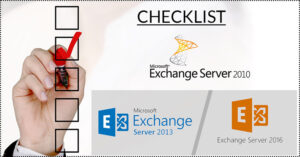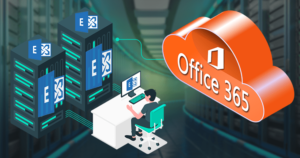Searching for a method of Lotus Notes to Exchange migration? Don’t worry, we have a solution for you. We are here going to discuss in detail the process of Lotus Notes to Exchange migration. People frequently need to carry this task due to reasons like change in job, cost factor, etc. Here you will find the most authentic information about this process.
Download a trial version of Shoviv Lotus Notes to Exchange Tool to know in a better way.
How to Manually Perform Lotus Notes to Exchange Migration
Below we are explaining the steps undertaken usually in the manual method:
- Download and installation of the Transport Suite:
First of all, download the Transport Suite. If you are using a 32-bit system then one must download transporter32.msi. Otherwise, one can navigate to the transporter.msi folder.
- The next step involves the installation of the suite. Then running the .msi file opens up a welcome screen. One has to accept terms and conditions in the agreement window then continue.
- The next screen slide asks you to choose components and install location. You are now supposed to choose for Microsoft transporter tools and deselect an alternative of free busy Add-in task for Lotus Notes.
- Then, Browse the destination location where you want to install the transporter suite.
- Press Next. A ready to install screen will appear. Select Install.
- A folder named Microsoft Transporter Suite for Notes will appear after the completion of the process.
Step 2: Generate Directory Connector
Further, in the process, the next step is the generation of directory connector. There are two alternative ways to do that.
Use of Transporter Management Console
- From the console tree, select the option of connect under tools for Lotus Notes.
- Choose the option to create a directory connector after clicking on it.
- Next, a create directory connector will open up on the screen. Click Next to migrate Lotus Notes to Exchange.
- Hit create and finish after this process finishes.
Use of Command Shell
These are the prerequisites for configuring Notes permission:
Need default Notes administrator account or any other account with these permissions:
- Editor approach to names.nsf files
- Access to UserCreator and UserModifier roles
- Capacity to delete documents when needed
Step 3: Configuration of Directory Connector
- Firstly, select the newly made directory connector to export NSF to Exchange 2013.
- Then right-click on it and choose the option of properties or navigate to the Action menu and select the option of Properties from there.
- Four tabs will appear in the properties window. General tab, advance tab, sync to active directory tab, and sync to notes tab.
Step 4: Synchronize to Directories
- Select the synchronize option while setting up the directory.
- Right-click on Directory Connector after choosing it.
- Navigate to the action panel, context menu, choose the synchronize option.
- A synchronize window emerges on the screen. The user has to select the option of update synchronization or full synchronization.
- The update synchronization is useful when one has to execute the synchronization for updated or modified options.
- Follow the required type of synchronization, select the synchronize option.
Click on Finish once the synchronization process is over.
Drawbacks of Transporter Suit Method
- Bulk migration is not a convenient way since you may get an error such as “Maximum request length exceeded”.
- Encrypted Mailboxes/NSF files will not get processed since this method doesn’t support such mailboxes migration.
- Missed out email attachments while migrating data and you might lose your important files.
- This method simply doesn’t work for more than 1500 mailboxes so it’s a big limitation.
- There is always a risk of data loss while performing the migration process.
- This method is very time-consuming.
An Effortless and Efficient Way for Lotus Notes to Exchange Migration
After reading all these steps you must be wondering if there is a simpler way for Lotus Notes to Exchange Migration. There surely is a way that you will be able to easily understand. We at Shoviv Software understand that no one has time to spare for lengthy procedures or to acquire the knowledge required. So we present a tool that doesn’t only carry Lotus Notes to Exchange migration but also provides a guarantee of ease of use, comfort, and safety.
The Shoviv Lotus Notes to Exchange Migration Tool
Shoviv Lotus Notes to Exchange Migration is a third-party professional tool. It works toward the migration of NSF data to Live Exchange Server and PST format. It works seamlessly for each item type, including emails, contacts, and calendars. Additionally, it grants access to the finished result using MS Outlook on the Windows device. You can get familiar with other attractive features of this Lotus Notes to Exchange migration tool below:
- Provides an efficient way to migrate Lotus Notes data to Exchange Server without altering data.
- There is no limitation with migrating the numerous NSF files to Exchange Server in a single attempt.
- Users can add Domino server mailboxes and export into the Live Exchange Server and Outlook PST file format very easily.
- User-centric options like filter option and preview option are also given within the software.
- Advanced options like Email Translation and Folder Mapping Option are also facilitated within the software to provide a professional approach.
- Shoviv Lotus Notes to Exchange Migration Software comes with an easily understandable GUI for simple and efficient processing.
- The software expertly maintains the folder hierarchy and integrity of the data.
Don’t forget to check our latest arrival on “Lotus Notes to Office 365 Migration, and GroupWise to Office 365 Migration .
Final Words:
Migration toward the best is an obvious thing hence Lotus Notes users are migrating from Lotus Notes to Exchange by considering their priority. Migration of data is not an easy task if you are not technically sound and choosing a manual way. The manual way along with the technical complexity also comes with limitations and drawbacks. For the perfect and proficient execution, Shoviv Lotus Notes to Exchange Migration tool is a mastered tool. Users can easily and for free, check the working of the software by downloading the free trial version. A technical support team is also available for 24*7 to help you out with any concerns regarding the software.
- How to Backup and Restore Emails in Webmail? - March 25, 2025
- How to Migrate Outlook to New Computer? - February 15, 2025
- Fix If Outlook Cannot Display the Specific Folder Location - February 1, 2025




